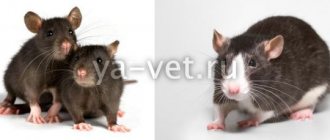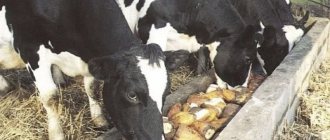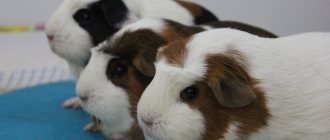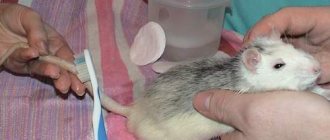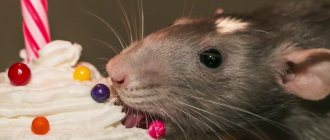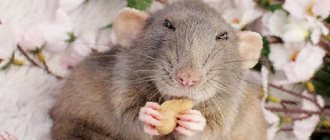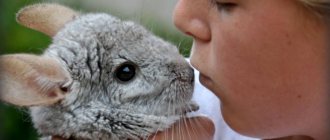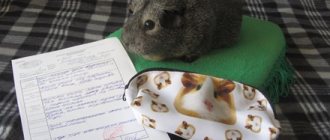What do wild mice eat?
You can find mice in deciduous, tropical and coniferous thickets all over the planet. Omnivorous rodents adapt to rather difficult conditions and find suitable food for themselves in forests, meadows, swamps, steppes, taiga and the tropics. If possible, they settle as close as possible to human habitation, where it is easiest to get food.
Of the more than 400 varieties in Russia, three are most often found: house, field, forest.
Food of different types
House mice are quite omnivorous and voracious, with an active metabolism. The list of foods that these animals eat with pleasure includes:
- grains (millet, oats, wheat), seeds (sunflower, pumpkin), legumes;
- dairy products;
- bread;
- all types of meat;
- vegetables (cabbage, cucumber, carrots, beets) and greens (dandelions, green grass);
- fruits;
- insects and their larvae.
House mice find part of their diet in natural areas, but a significant percentage of their food is provided by people - rodents can easily steal food from the kitchen or cellar, or conduct active searches in discarded garbage.
Field mice prefer not to strain and not move long distances when obtaining food. What is planted on the field is enough for them:
- wheat;
- barley;
- corn;
- sunflower;
- oats;
- buckwheat;
- peas.
As fresh greenery, voles happily eat weeds in the inter-rows of cultivated plants and can gnaw on all kinds of tubers and bulbs. To store supplies for the winter, animals make burrows located close to the surface of the earth, under shelters - branches or straw.
The diet of wood mice includes everything that can be found in their habitat. The variety of food is great:
- hazelnuts;
- plant and tree seeds;
- berries;
- nuts;
- acorns;
- weeds and young greens;
- mushrooms;
- small insects and their larvae;
- eggs of small birds.
This type of rodent stores food in burrows, which it makes in tree hollows and under stumps.
Meals according to the time of year
In the wild, mice have to eat food that suits the time of year. The diet is distributed approximately equally for all species:
- plant foods in summer;
- juicy fruits, grains and seeds in autumn;
- stocks made in summer and autumn, as well as some root crops - throughout the winter and early spring.
Whenever possible, all types of mice approach people's houses, where there is always a chance of finding something edible (if not in houses or barns, then in fields and gardens).
How to choose bait for a trap
Rodent control is carried out using bait. Many people believe that cheese is the animal’s favorite product. But that's not true.
The article at the link has some interesting information about the misconception about cheese.
The most effective pieces will be:
- apples or pears;
Mice are lovers of harmful smoked foods.
- apricot or peach;
- drain;
- fresh bread soaked in sunflower oil;
- freshly smoked or salted lard.
Boiled porridge and sunflower seeds are also suitable. With the help of any of the listed products, the animals will very quickly fall into a trap.
What to feed a decorative mouse
The life of decorative mice at home is much simpler than that of their wild counterparts. An owner interested in a long and healthy life of an ornamental rodent must provide it with adequate and nutritious food in sufficient quantities. And a truly caring owner is also ready to personally compose food for his pet from the most useful ingredients.
Hard food
For ornamental mice, the basis of the diet is grain food, composed of a mixture of seeds of woody and/or herbaceous plants. You can select from the following components:
- Oats . Oat seeds contain more than 40% starch, about 14% protein and 4-5% fat, as well as B vitamins. Cereals that are in the stage of milky ripeness are especially useful for domestic rodents.
- Wheat . Rich in starch (at least 65%) and protein (up to 15%), not too fatty (only 2%), but contains mineral salts and vitamins PP, B-group. For normal metabolism, domestic mice should be given sprouted or soaked grains, not dry ones.
- Sunflower seeds for rodents are a very important component of the diet, healthy and highly nutritious (about 52% fat and up to 32% vegetable oil). It contains fatty acids and minerals in significant quantities, so the percentage of seeds in the feed mixture should not exceed 15%. With increasing dosage, pets may develop obesity.
- Millet . Red varieties of millet are considered the most useful and nutritious for ornamental mice. These seeds of cereal herbaceous plants are saturated with proteins, so their amount in the diet should be increased to 60-70%. Millet is given either in a mixture of dried seeds, or in its raw form - in panicles of milky-waxy ripeness.
- Legumes (soybeans, beans) are recommended to be given to mice in boiled form, peas - in the form of boiled cereal. These seeds are also quite nutritious; their abundant consumption leads to obesity.
In addition to cultivated plants, mice should be given seeds of wild plants, tubers, berries, roots, and nuts.
If the owner of decorative rodents does not want to prepare food mixtures on their own, you can buy specialized food in the store. The basis of such products are approximately the same components - oats, millet, wheat. They have a balanced composition of microelements, plant and animal proteins, fats and vitamins.
It is important to remember that you cannot feed mice exclusively with industrial mixtures; you must add natural ingredients - vegetables, fruits, berries, grass.
Juicy food
Juicy food - vegetables, root vegetables, melons, fruits and berries. For feeding rodents choose:
- Cabbage (except red cabbage). Savoy cabbage, white cabbage, cauliflower, broccoli are rich in vitamin C, amino acids and microelements necessary for the normal metabolism and life of mice.
- Rutabaga . Rutabaga contains a lot of glucose, 1-2% protein and fiber, 0.2% fat and a rich set of vitamins (C, P, B) with minerals (potassium, calcium, iron, phosphorus, magnesium and sulfur).
- Carrot . Carrots contain about 2.5% proteins and 12% sugars, making this root vegetable palatable. The product is useful for mice due to its saturation with vitamins and microelements; its regular use normalizes metabolic processes and has a positive effect on the condition of the sensory organs, skin and fur.
- Cucumbers . Low-calorie and not very nutritious cucumbers compensate for the mouse body's need for water, and also contribute to better absorption of nutritional components from grain feed.
- Apples . Can be given fresh or dried. The latter are best soaked for a couple of hours and boiled a little. Apples contain fructose, fiber and pectin, and are rich in beneficial microelements and vitamins. Pets are allowed to be given fruit without any signs of damage, let alone rotting.
- Pears . Pears can also be part of the diet of mice, however, due to the high sugar content, they must be given in limited quantities so as not to disrupt the animals’ metabolism.
- Strawberries (strawberries) . Strawberries and strawberries contain about 15% sugars (fructose and glucose) and 1% acids, pectin, vitamins (A, E, C, B-groups) and trace elements such as iron, phosphorus, cobalt, manganese.
Healthy! Green potato and juicy carrot tops, as well as the top leaves of cabbage, should be periodically added to the rodents' diet.
Among the succulent food that is beneficial for mice, we should also mention turnips, beets, potatoes and zucchini.
Feeding rules
A mouse needs to eat enough food per day so that its weight is approximately one-fifth of the rodent’s live weight.
On average, an adult animal needs one teaspoon of grain mixture per day. There is a small “but”: food should always be in the cage. The fact is that mice eat every two to three hours due to their rapid metabolism. If the rule is ignored, the pet may develop health problems.
Be sure to put branches of fruit or wild trees and shrubs in the cage so that the rodents have the opportunity to grind down their teeth.
The food pyramid for mice looks something like this:
- proteins 14%;
- fats 10%;
- fiber 9%.
With any type of feeding, protein foods of animal origin must be offered once a week. This can be a boiled egg, boiled white chicken meat, freshwater crustaceans, fermented milk products, insects, etc.
Weakened animals, pregnant females, and babies can and should be given baby food. It will be especially useful if you are intolerant to natural milk.
Don't forget about vitamins and minerals. The first ones are given with food or dissolved in water.
Mineral supplements are sold in the form of figurines - mice love to chew on them.
You should never feed mice table scraps: any salty, sweet, smoked, fried, hot, spicy food is deadly for your pet. Even if human food does not destroy the tiny animal instantly, it will certainly lead to a faster death than is measured by nature.
Other harmful products:
- milk - many pets are intolerant;
- potatoes and their peelings;
- food for cats and dogs, although some owners note that mice love it;
- beet;
- tomatoes;
- cabbage;
- citruses;
- You should also not eat the green parts of potent medicinal herbs, especially those that are bitter: celandine, wormwood, gentian, etc.
Fresh water should always be in the cage.
It is better to use nipple drinkers, so the liquid will always remain clean. During transportation, you can use ordinary wet cotton wool as drinking bowls - the animals will suck water from it and will definitely not die of thirst during the journey.
What else can you supplement your diet with?
To prevent decorative mice from having problems with teeth grinding down, in addition to the main food, it is advisable for them to occasionally gnaw on pieces of spruce and pine needles, as well as tree branches:
- aspen;
- hazel;
- apple trees;
- and you;
- rowan.
The branches should be young and juicy, with high nutritional and taste properties.
It is advisable to supplement the diet of ornamental rodents with the following products:
- boiled meat (including well-processed spongy bones and cartilage);
- egg powder (or crushed boiled eggshells);
- milk and dairy products;
- cheese (in limited quantities);
- fresh lard;
- mineral additives (chalk, salt);
- fish oil;
- yeast;
- nuts (except peanuts).
conclusions
The diet of mice in domestic and wild conditions is somewhat different, since the decorative species is fed for the most part with special food mixtures and various treats from the table, which the owners carefully treat the pet with.
Mice living in nature have to make do with what is around them. But both of them have extremely short life expectancies . Therefore, when keeping a pet mouse, it is necessary to adhere to a balanced diet, avoiding obesity and the resulting health problems.
Ready-made feed
Today, specialized stores offer a large selection of grain mixtures for domestic rodents. These foods are also suitable for gerbils. Ready-made formulations include grains, healthy herbs, special minerals, and vitamin complexes.
As a rule, the domestic gerbil is offered one or another composition to try. If the animal eats with pleasure, then this food can be used regularly.
There are times when a pet chooses something “tasty” from the proposed mixture and leaves some components of the composition untouched. It should be remembered that the animal did not like it, and in the future do not give the animal such products.
Some gerbils prefer pelleted food. The advantage of such nutrition is optimization of use. The gerbil no longer has the opportunity to choose what to eat and what not, and eats the entire composition.
Description of the size and character of white house mice
The white mouse is one of the small representatives of rodents.
What a mouse looks like - description of appearance and size
Appearance:
- size no more than 12-12.5 cm in length;
- the tail occupies over 50% of the entire body, 6-11 cm;
- weight 15-30 g;
- the muzzle is sharp, elongated;
- eyes large, round; they can be either dark or red (in albinos). They are characterized by excellent vision;
- The ears are small and round in shape.
Character
Mice are active creatures. They are in constant motion. If they are not running and climbing, then they wash themselves, gnaw, and dig.
Note! They are characterized by friendliness. There have been no recorded cases of aggressive behavior towards their relatives or other small animals. They can quite easily share their food with others.
White mice behave trustingly with people. Tamed individuals recognize the owner and can take food from their hands.
You need to hold the animal in your arms carefully
In relation to their offspring, white mice are caring parents. They not only do not abandon newborn mice, but take care of them, decorate the house for their offspring, and not only females, but also males do this.
Nuts
Mice love nuts no less than seeds. They gnaw through the thick shell on their own. But shelled nuts will attract attention faster.
For bait you can use:
- walnut kernel;
- peanut;
- peeled hazelnuts.
Naturally, nuts should be without spices. Those sold with beer, with various flavoring additives, will not be suitable.
Ferrets
Ferrets and foxes eat mice Ferrets also eat mice. During the day, the predator is able to catch and devour at least a dozen rodents.
Stocky with a flexible, elongated body, the animal has disproportionately muscular short legs, which allows them to move by jumping and swim perfectly. Long, strong claws on the fingers make it possible to dig deep holes and deftly climb trees. They are used to catch ferrets and mice.
The ferret's body length is about 50 cm, the animal has a flexible neck, an oval head and a slightly blunt muzzle towards the nose. The fluffy tail is a source of pride for the animal (in adults it can reach up to 20 cm). Near it there are special glands that secrete a specific secretion with a pungent odor.
The thick fur covering the animal's body is lighter at the base and darker in color at the tip. It is especially beautiful after the autumn molt, becoming more silky and shiny. The animal's color range can vary from light sand to almost black tones.
